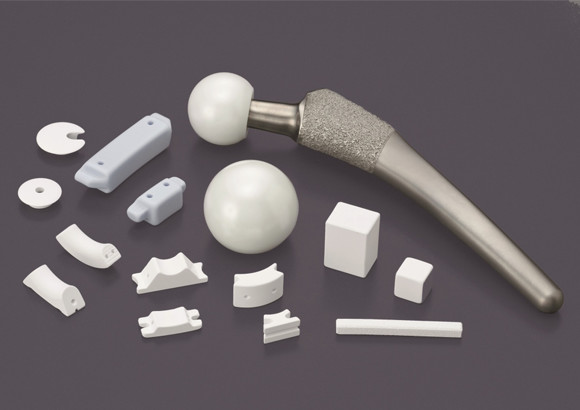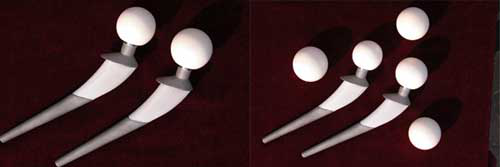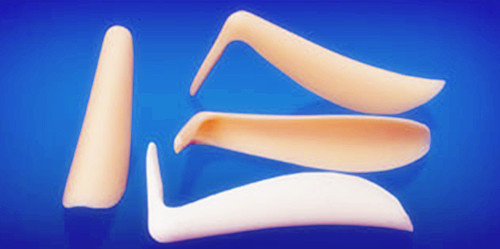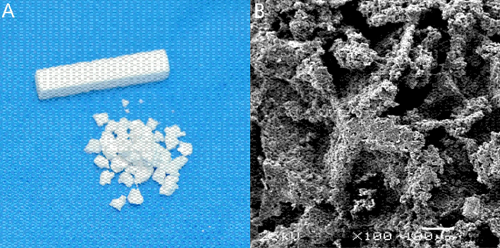Bioceramics are Entering Our Bodies
Since the 21st century, new materials have gradually taken place in our daily life. As a new material, bioceramics has brought great convenience to people's life and health, which have received more and more attention from the field of medical devices and biomedical materials in recent years.
Bioceramics is a kind of ceramic materials used for specific biological or physiological functions, that is, ceramic materials directly used in the human body or directly related to the human body, such as biology, medicine, and biochemistry. It is widely used in orthopedics, dentistry, plastic surgery, oral surgery, cardiovascular surgery, and eye surgery because of its good biocompatibility and stable physicochemical properties.
According to the use of different bioceramics can be divided into planting bioceramics and bioengineering bioceramics; it can be divided into active bioceramics and inert bioceramics according to the activity of bioceramics in vivo. This news classifies bioceramics from the latter as follows.

Bioinert ceramics
Bioinert ceramics have stable chemical properties and good biocompatibility, such as alumina, zirconia, etc., and their physical and mechanical properties and functional properties match human tissues. Their main characteristics are high mechanical strength and strong wear resistance.
Zirconia (ZrO2)
Zirconia ceramics are by far the strongest dental restorative materials and are widely used in the orthopedics hip prostheses. The zirconia materials and osteoblasts were co-cultured in vitro and the biocompatibility was confirmed. In the orthopedics, zirconia ceramics are used primarily for artificial hip joints. However, the bonding strength of zirconia ceramics is insufficient, which affects the bonding stability. At present, more surface treatment methods such as acid etching and sandblasting are applied to improve the bonding performance of ceramics. Besides, the brittleness of zirconia ceramic material affects its use, so people usually adopt toughening method to improve it.
Alumina (Al2O3)
In the 1970s, alumina ceramics began to be used in total hip replacement (THA). Alumina ceramics with a hardness of over 2000HV is only slightly toxic to human fibroblasts in vitro, and its mechanical properties remain unchanged for a long time in the internal environment. With the application of thermal-isostatic pressure plasty and laser etching technology, the grain size of three-generation alumina ceramics is smaller, the purity and density are higher, the strength and hardness are significantly increased, and the fragmentation rate is reduced. The high hardness and good wear resistance of alumina ceramics make it the main biological material in orthopedics THA.

Silicon carbide(SiC)
In recent years, people have tried to apply silicon carbide ceramics in the field of oral medicine. As an implant material, silicon carbide ceramics have been increasingly favored by scientific research and clinical research, and exploratory work has been done in the aspects of biocompatibility and toxicity. Bioglass coating was prepared on the surface of silicon carbide ceramics, which further enhanced the biological activity of silicon carbide ceramics.
Bioactive ceramics
Bioactive ceramics also known as biodegradable ceramics include surface bioactive ceramics and bioabsorptive ceramics. Biosurfactant ceramics usually contain hydroxyl and can be porous, and the biological tissue can grow and bond firmly with its surface. Bioabsorbable ceramics are characterized by partial or total absorption and induce the growth of new bone in the organism. Bioactive ceramics include bioactive glass (calcium phosphate), hydroxyapatite ceramics, and tricalcium phosphate ceramics.
Hydroxyapatite ceramics (HAP)
In order to improve the mechanical properties of hydroxyapatite, the mechanical properties of the compact HAP prepared were improved. However, its apparent porosity is relatively small. After implantation in the human body, only bone can be formed on the surface, which lacks the ability to induce bone formation, and can only be used as a scaffold for bone formation.

Therefore, the research focuses on porous hydroxyapatite ceramics. It was found that the porous calcium phosphorus implant imitated the structure of bone matrix and had bone induction, which could provide the scaffold and channel for the growth of new bone tissue. Therefore, the tissue response of the implant after implantation was significantly improved than that of the dense ceramics.
Bioglass ceramic
The main component of bioglass ceramics is CaO-Na2O-SiO2-P2O5, which contains more calcium and phosphorus than ordinary window glass and can chemically bind to bone naturally and firmly. It has unique properties that distinguish it from other biological materials, and it can rapidly undergo a series of surface reactions at the implantation site, eventually leading to the formation of the carbonate-based apatite layer. The biocompatibility of bioglass ceramics is good. The materials are implanted into the body without rejection, inflammation and tissue necrosis, which can form bone binding with bone.
At present, this material has been used to repair small ear bones and has a good effect on hearing recovery. However, it can only be used in parts of the body where the force is not much because of its low intensity. The material prepared by sol-gel method is characterized by good purity, high homogeneity, good biological activity and large specific surface area, which has better research and application value. In particular, the bioactive glass porous material has a good prospect in using as bone tissue engineering scaffold.
Calcium sulfate
Medical calcium sulfate, as a semi-hydrate crystal, has no obvious effect on the level of serum calcium in the body after complete degradation. After combining with water, it can become a solid implant and can be used as a carrier of water-soluble antibiotics. Calcium sulfate self-coagulates at a low temperature and does not cause damage to peripheral nerve tissue, and it has potential bone induced and released calcium ions. In the cooperation of a weak acid environment, local high calcium ions can bind to the calcium sensitive receptor of osteoblasts to promote the proliferation and differentiation of bone cells and regulate the formation of osteoid. However, the osteogenic capacity of pure calcium sulfate stents is limited, and only when the periosteum is present can calcium sulfate stents have some alternative osteogenic properties.
Hot spots of bioceramics
Composite material
In order to improve the mechanical properties, stability, and biocompatibility of bioceramics, many materials workers have done a lot of research on the composite bioceramics. Common matrix materials include biological polymer materials, carbon materials, biological glass, calcium phosphate bioceramics, and other materials, while the reinforcement materials include carbon fiber, stainless steel or cobalt base alloy fiber, bioglass ceramic fiber, ceramic fiber, and other fiber reinforcement. In addition, there are zirconia, calcium phosphate bioceramics, bioglass ceramics and other particle enhancers.

Nanotechnology
Due to the unique properties of nanometer materials such as surface effect, small size effect, and quantum effect, nanometer bioceramics materials have a broad application prospect, which will have super performances in the field of manufacturing and clinical application of hard tissue replacement materials such as artificial bone, artificial joint and artificial tooth.
In the aspect of bioactive ceramics, the main research at present is to simulate fine natural bone structure. In the bone of natural bone, hydroxyapatite mainly consists of needle crystals of 10-60nm long and 2-6nm wide. Therefore, the current research on HAP nanomaterials mainly focuses on nano-HAP crystals, nano-HAP/ polymer composites, and nano-HAP coating materials.









